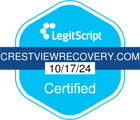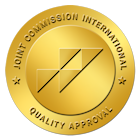Understanding Xanax: What Is It And How Does It Work?
Xanax, the brand name for the drug alprazolam, falls under the benzodiazepine class of medications. It interacts with the central nervous system, specifically by enhancing the effects of a neurotransmitter known as gamma-aminobutyric acid (GABA). By boosting GABA activity, Xanax induces a calming effect, reducing overall brain activity and promoting feelings of relaxation and tranquility.
Xanax is typically prescribed to manage anxiety disorders and panic disorders, and occasionally for short-term relief from insomnia. It proves to be effective when used as directed by a healthcare professional. However, the very properties that make Xanax beneficial also pose risks when it comes to misuse and potential overdose.
How much Xanax is too much? What are the signs that show when a prescription has become an addiction? Crestview Recovery is taking a closer look at the fine line between medication and addiction. If you or someone you know struggles with misusing medications, our prescription drug addiction treatment program in Portland offers personalized plans, 24/7 care, and access to a variety of types of therapy and treatments to help you get on the right path again.
Xanax Dosage Guidelines: Prescribed Vs. Non-Prescribed Use
Understanding the recommended dosage of Xanax is paramount in preventing the risk of overdose. When following a healthcare provider’s guidance, Xanax can serve as a safe and effective treatment for various anxiety-related conditions. Physicians generally begin treatment with a low dose and may adjust it gradually based on the patient’s response.
The potential for overdose significantly escalates when individuals use Xanax outside of these prescribed guidelines. Those who take Xanax without a prescription or exceed the recommended dosage place themselves at a higher risk of adverse effects, including overdose. This misuse often occurs when individuals self-medicate or use Xanax recreationally. They seek its sedative effects without a full understanding of the potential consequences.
Factors Influencing Xanax Overdose
Several factors contribute to the likelihood of a Xanax overdose. One critical factor is tolerance, a phenomenon where the body adapts to the presence of the drug over time. As tolerance develops, individuals may find themselves requiring higher doses to achieve the same therapeutic effects. This consequently increases the risk of overdose.
Individual differences also play a pivotal role in Xanax overdose. Age, weight, overall health, and pre-existing medical conditions can influence how the body metabolizes the drug. It is important for healthcare providers to consider these factors when prescribing Xanax to minimize the risk of overdose.
Knowing how much Xanax is too much depends on each individual and their overall health history. This is why patients are asked for a full background of their physical and mental health before being given prescriptions.
Interactions with other substances further complicate the use of Xanax. Combining Xanax with alcohol or other central nervous system depressants can amplify the soothing effects. This could lead to respiratory depression—a life-threatening condition where breathing becomes dangerously slow or shallow.
Recognizing Xanax Overdose Symptoms
Is there a way to recognize how much Xanax is too much? The ability to recognize the symptoms of a Xanax overdose is crucial for prompt medical intervention. Common signs include extreme drowsiness, confusion, impaired coordination, slurred speech, and slowed or difficult breathing. In severe cases, an overdose can lead to loss of consciousness, seizures, and, in the worst scenarios, coma.
Immediate medical attention is essential if a Xanax overdose is suspected. Delaying intervention can result in serious consequences, including respiratory failure, lifelong health complications, and, tragically, death.
Xanax Overdose Treatment: Medical Interventions

Swift and proper medical interventions can significantly impact the outcome of a Xanax overdose. In a hospital setting or in a medical detox program, healthcare professionals may administer medications to counteract the effects of Xanax, such as flumazenil, a benzodiazepine receptor antagonist. Supportive measures like intravenous fluids and respiratory support may also be necessary to stabilize the individual.
In severe cases, where respiratory depression is a concern, mechanical ventilation may be required to assist with breathing. The effectiveness of treatment depends on the promptness of medical intervention and the severity of the overdose.
What Are The Possible Long-term Effects Of Xanax Overdose?
The long-term effects of Xanax overdose treatment and medical interventions can vary depending on the severity of the overdose, the individual’s overall health, and the promptness of medical care. Here are some aspects to consider:
Recovery Period
After the immediate treatment of a Xanax overdose, individuals may experience a recovery period. The duration of this period can vary, and it often involves close monitoring to ensure stability.
Psychological Effects
The aftermath of a Xanax overdose can have psychological effects. Individuals may experience increased anxiety, depression, or trauma related to the overdose event. Mental health support, such as therapy or counseling, may be necessary for long-term recovery.
Medical Follow-Up
Individuals who have experienced a Xanax overdose will likely need ongoing medical follow-up to monitor their overall health. This may include regular check-ups, assessments of organ function, and adjustments to any medications they take.
Withdrawal Symptoms
If the individual was using Xanax regularly and experienced an overdose during a period of misuse, they may face withdrawal symptoms during the recovery period. Withdrawal symptoms can include anxiety, insomnia, and mood changes. Medical professionals may manage these symptoms through a carefully supervised tapering process.
Risk of Future Overdose
Individuals who have overdosed on Xanax may be at an increased risk of future overdoses, especially if the underlying issues leading to misuse are not addressed. Medical interventions should be part of a broader treatment plan that addresses the root causes of Xanax misuse.
Psychosocial Support
Long-term recovery often involves psychosocial support. This may include participation in support groups, family therapy, or educational programs to help individuals develop coping mechanisms and resilience against future challenges.
Educational Initiatives
Medical interventions should also incorporate educational initiatives to empower individuals with information about the risks of Xanax misuse, proper medication management, and the importance of seeking help for mental health issues.
Integrated Treatment Programs
Individuals who have experienced a Xanax overdose may benefit from integrated treatment programs that address both substance use disorders and underlying mental health conditions. These programs often provide a comprehensive and holistic approach to long-term recovery.
The Importance Of Seeking Help: Recovery And Support
Surviving a Xanax overdose marks the beginning of the journey toward Xanax addiction recovery. After a medical crisis, individuals who have experienced an overdose need comprehensive support to address the underlying issues contributing to their drug misuse. This may involve therapy, counseling, or participation in support groups to help individuals develop healthier coping mechanisms and prevent future episodes.
Friends and family also play a crucial role in the recovery process. Creating a supportive environment, free of judgment, can encourage individuals to seek the help they need. It’s essential to recognize that addiction is a medical condition that requires understanding and empathy rather than blame.
It’s essential for individuals who have undergone Xanax overdose treatment to actively engage in their recovery process and follow the recommendations of healthcare professionals. Long-term success is often associated with a combination of medical interventions, psychological support, and lifestyle changes aimed at promoting overall well-being.
Xanax Overdose Statistics: Understanding The Scope Of The Issue
Sources have conducted studies showing that Alprazolam, the drug behind the name-brand Xanax, is relatively more toxic than other benzodiazepines in overdose. The increasing availability of Alprazolam prescriptions is contributing to the rising risk of poisoning through unsupervised medication.
It’s crucial to note that these statistics may vary over time and across different regions. Local health agencies and organizations often track overdose data to develop targeted interventions and prevention strategies.
Empowering Awareness And Prevention
Now that we’ve delved into the complexities of Xanax overdose, let’s explore how we can empower ourselves and others to prevent such incidents.
First and foremost, education is key. Understanding the risks associated with Xanax, especially when misused or taken in combination with other substances, is crucial for making informed decisions. Healthcare providers should communicate clearly with patients about proper usage, potential side effects, and the importance of following prescribed guidelines.
Additionally, community outreach and awareness programs can contribute to preventing Xanax misuse. These initiatives can provide information about the dangers of self-medication, the importance of seeking professional help, and resources available for those struggling with anxiety or other mental health issues.
We must all begin to ask ourselves how much Xanax is too much. The more knowledge we have, the more equipped we are to fight the spread of addiction in our communities. Remember, it’s always easier to prevent addiction or an overdose from happening than it is to deal with the aftermath.
Crestview Recovery: A Beacon Of Support

In the realm of addiction recovery, institutions like Crestview Recovery are instrumental in preventing Xanax misuse and promoting overall mental health. Crestview Recovery employs a holistic approach to treatment, addressing the physical, mental, and emotional aspects of addiction. Their experienced and compassionate staff work with individuals to develop personalized recovery plans, fostering a supportive environment for lasting change.
Whether you’re seeking assistance for yourself or someone you care about, reaching out for help is a crucial step towards overcoming Xanax misuse and preventing overdose. We offer a range of services, from detoxification to outpatient programs, tailored to meet the unique needs of each individual. Get in touch with us to find out which services suit your needs.
Understanding the risks associated with Xanax overdose requires a multifaceted approach. We need to understand the pharmacology of the drug, recognize individual risk factors, and address the broader issue through education and support. By doing this, we can collectively work towards minimizing the impact of Xanax misuse on individuals and communities.
By promoting awareness, encouraging responsible use, and fostering a culture of empathy and support, we can contribute to a safer and healthier society for everyone.
































